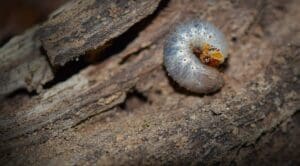
Good evening. Earlier this week we posted a blog about the 5 common lawn diseases that we can find in Massachusetts. So today we thought we’d expand this by covering these 5 diseases and what you can do to prevent them, starting with Brown Patch.
This disease is a widespread and common fungus that can infect many different turfgrasses. As the name suggests, it causes brown patches to show up on the lawn. It thrives when high humidity and hot weather appear during the summer. Although it’s not common in the arid regions like the Mountain States and Southern California, it’s a problem for homeowners in all other parts of the United States.
Do you see brown patches appearing on your beautiful lawn? If you’re located in a region that has high humidity and hot temperatures, it’s possible that your lawn has an infection of Brown Patch.
Below we are going to cover some topics related to this disease, including some questions that are frequently asked about it and some tips on how you can help your lawn to be healthy again.
Which Grass Types are Susceptible to Contracting Brown Patch?
This disease is a widespread and common problem that is caused by the fungus Rhizoctonia solani. It can affect many different common turfgrass varieties. However, the ones that are most susceptible are bentgrass varieties, perennial ryegrass, and tall fescue.
It also can cause problems in lawns with Kentucky bluegrass from the middle part of the summer to late summer, during long periods of humidity and high temperatures.
What’re Some Signs You Have Brown Patch?
If you’re seeing spotting on grass blades, you should suspect that you have an invasion of Brown Patch.
Some of the more obvious signs that can help you identify the disease are circles of dead and brown grass that are surrounded by dark, narrow rings. Patches usually are irregular and might be large, since the disease often spreads fast.
This spotting can take on various appearances based on the grass’s characteristics that it’s infecting. Below are signs based on the kind of grass that is in the yard.
- Closely Mown Grass – If you cut your grass short, there is going to be brown patches on the grass, along with expanding grey rings on the patch’s outer edge. This can be noticed most when the grass’s damp, particularly during early morning hours.
- High-Cut Grass – When your grass is kept taller, it often will exhibit almost circular areas of brown or areas that are circular. However, these often don’t show the grey exterior.
- Tall Fescue – These grass varieties often won’t show the usual circular patterns. Instead, this fungus appears on the scattered blades. This will often feel you’re your whole lawn is seeming off. The color might be more of a tan color instead of the lush, beautiful green.
Why Do Lawns Get Brown Patch?
A lawn can become infected when there’s been cooler weather. The weather takes hold and develops when the temperature is lower than 80 degrees. However, it won’t spread and appear to you until there’s a rise in humidity and temperatures. Mist, rain, or dew on the leaf blades in those conditions can also contribute to Brown Patch showing up.
How can Brown Patch be Prevented & Battled?
Brown Patch is caused by a fungus, and it’s found in a lot of areas. It can be hard to prevent the disease if you have a susceptible grass species.
Watering the grass properly during the early morning through the middle of the day to prevent the grass from being wet at night might give you a limited benefit. Proper and frequent mowing will help the grass blades to be dry and to keep the air moving can help to prevent and battle Brown Patch.
Other Tips to Help You Treat Brown Patch
- Apply fungicide before the disease’s onset.
- Don’t under fertilize or over fertilize since this can help with encouraging Brown Patch.
- Use average nitrogen fertilizer amounts.
Now you know a bit more about Brown Patch and what it can do to your lawn. If you are concerned about your lawn or you want to have someone come out and look at it, contact us and let us know what your concerns are. We’ll be happy to send you a quote and let you know what we can do for you. Follow us on Facebook, too.


